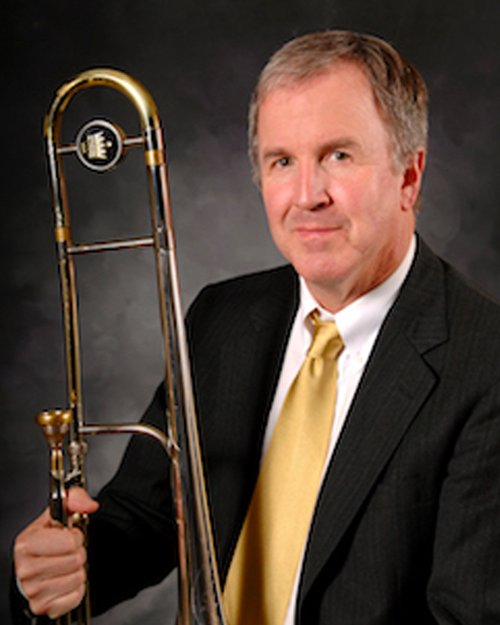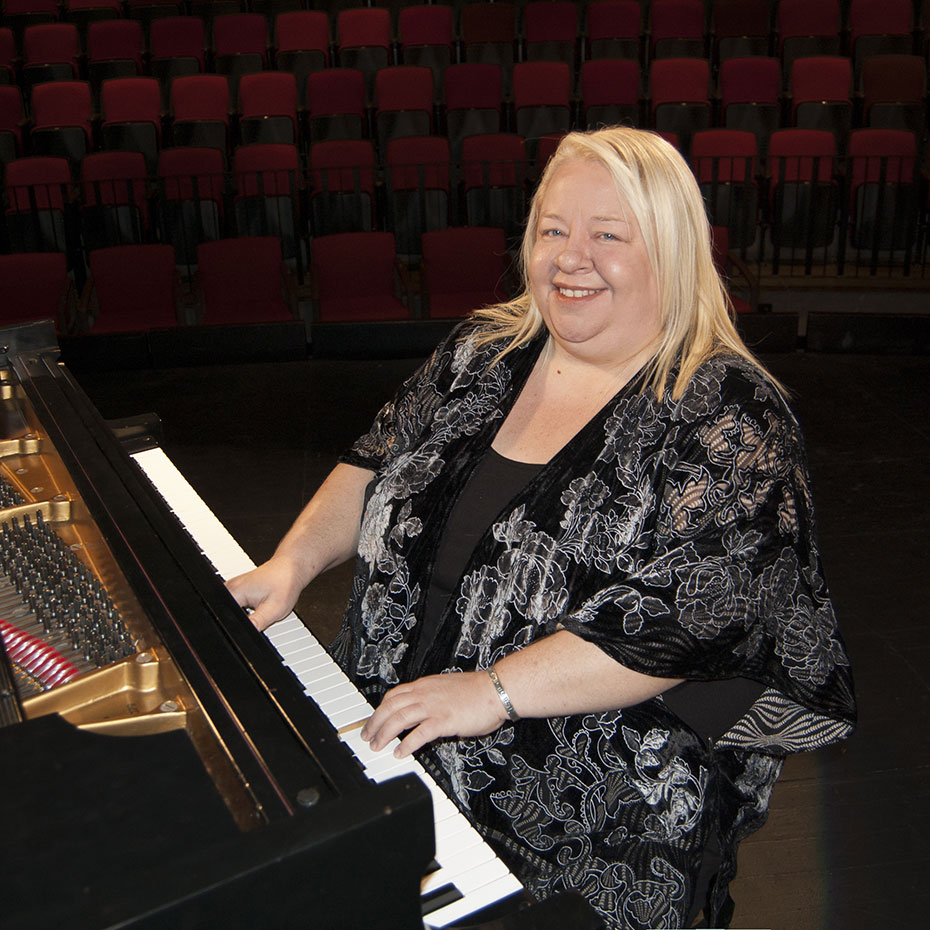by Jarrett Hoffman

At the piano in the Gershwin will be the Orchestra’s own Jackie Warren. At the podium will be Cleveland Pops Orchestra music director Carl Topilow. And joining the CJO will be string players from the Cleveland Pops, BlueWater Chamber Orchestra, CityMusic Cleveland, and Case Western Reserve University.
Performances take place Friday, March 15 at 7:30 pm at the Maltz Performing Arts Center and Saturday, March 16 at 8:00 pm at BLU Jazz+.
The program is titled “More Experiments in Modern Music” — a play on that historic concert led by bandleader Paul Whiteman on February 12, 1924 under the title “An Experiment in Modern Music,” which featured the first performance of Rhapsody in Blue as one of its main attractions.
“We’re going to present some modern music today, but also play some stuff that was considered modern in the 1920s,” trombonist and Cleveland Jazz Orchestra artistic director Paul Ferguson (pictured) said during a recent interview over Zoom.
“We’ll start off light. I arranged a ‘20s medley that has Puttin’ On the Ritz — people get to hear me sing — and The Charleston, then a song recorded by the Paul Whiteman Band called Whispering which was a big hit, and ending with Alexander’s Ragtime Band. So, a couple Irving Berlins there. And we have Black Bottom Stomp by Jelly Roll Morton, which is a real crowd pleaser — just the height of early jazz, I would call it.”
Ferguson has also programmed a long-dormant work by Keith Jarrett. “It hasn’t been played in almost 50 years — he performed it at Eastman in 1976. Keith’s a personal favorite of mine, and I just thought this would be a chance to do another piece of modern music. And Jackie will play a free improvisation like Keith would do — we’ll give her a few minutes on that and then go into the piece.”
Just before Rhapsody in Blue will be Duke Ellington’s 1937 Diminuendo and Crescendo in Blue. “I’d call it a kitchen sink composition — he just threw everything into a six-minute piece. It’s through-composed essentially, with no improvisation.”
Ferguson noted that Ellington and Gershwin were friendly competitors. “It was like, who is going to really define American music? Is it going to be Gershwin? Is it going to be Ellington? Or is it going to be someone like Aaron Copland, who studied with Nadia Boulanger? The answer is all three, and more — and the definitions continue today.”
While Rhapsody in Blue was billed as a “jazz concerto” in the publicity leading up to its premiere, what Gershwin wrote — and intended — is a freely flowing, single-movement rhapsody rather than a concerto, and a blend of jazz and classical music rather than a work of jazz.
The question of genre is built into the set of new works on this program, given the composers’ differing backgrounds. Some of the pieces are “informed by jazz,” Ferguson said, adding that Gershwin wasn’t truly a jazz musician, even if he had some jazz “in his blood.”
Which version of Rhapsody in Blue will be played — the 1924 jazz-band original, the 1926 scoring for theater orchestra, or the frequently played 1942 symphonic scoring, all of which were orchestrated by Paul Whiteman’s chief arranger, Ferde Grofé? Actually, none of them.
“The version that everybody hears is the later orchestration, which is nice and big and lush. What we’re playing is the theater arrangement, but I’ve made some extra accommodations. Instead of clarinet on top, for some of it we’ll be using soprano sax, which makes it a bit more ‘yakety.’ And instead of bassoon, we’ll use the baritone sax. So it’ll sound a bit more like a jazz band — we’ll call this the Paul Ferguson arrangement.”
The Rhapsody’s centennial has inspired plenty of programming, but also plenty of debate — nothing new for this piece that since its premiere has often thrilled audiences but divided critics, who have cited issues of form, depth, and cultural appropriation.
But Ferguson sees a common thread in the critiques, ranging from that of Leonard Bernstein in 1955 to that of Ethan Iverson in 2024 with his New York Times editorial “The Worst Masterpiece: ‘Rhapsody in Blue’ at 100” — interesting to read in dialogue with its counter-argument from Times opinion writer John McWhorter.
“Everybody I’ve read who’s critiqued the piece has done so with affection. They still like it, you know? And I love it,” Ferguson said, adding that the piece was always around the house when he was growing up.
“There are many truths about Rhapsody in Blue. It’s a piece you enjoy, but you enjoy it while you’re wrestling with it.”
Published on ClevelandClassical.com March 11, 2024.
Click here for a printable copy of this article




